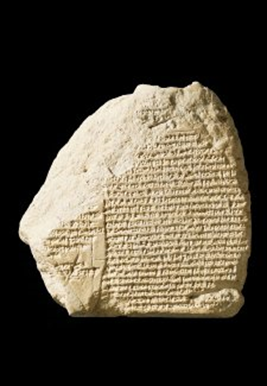For almost two millennia before the birth of Christ, the city of Babylon played a major role in world affairs. Situated in the centre of modern-day Iraq, roughly 50 miles from Baghdad, Babylon was, for a time in the first millennium BC, the largest city in the world. The city was famed as a place of learning and it was also the centre of a powerful empire which controlled much of the surrounding area, stretching as far as the Mediterranean coast of Syria. But, in the middle of the sixth century BC, the primacy of Babylon was threatened by a new power in the East, the Persians. Under Cyrus II, known to us now as Cyrus the Great due to his prowess as a conqueror, the Persians gradually began to carve out a vast Empire. The great kingdoms of the time – first the Median, and then the Lydian – were conquered, and, in 539 BC, Cyrus turned his attention to Babylon. The four texts here are ancient accounts of the ensuing conflict and Cyrus’ victory. Be aware that each source will contain some unfamiliar words. The most important of these are explained in the glossary below, but don’t worry if you see a word you don’t understand – in the main the unusual words are simply names for various things (places, months, gods etc.) in Babylonian and won’t prevent you from understanding the text.



